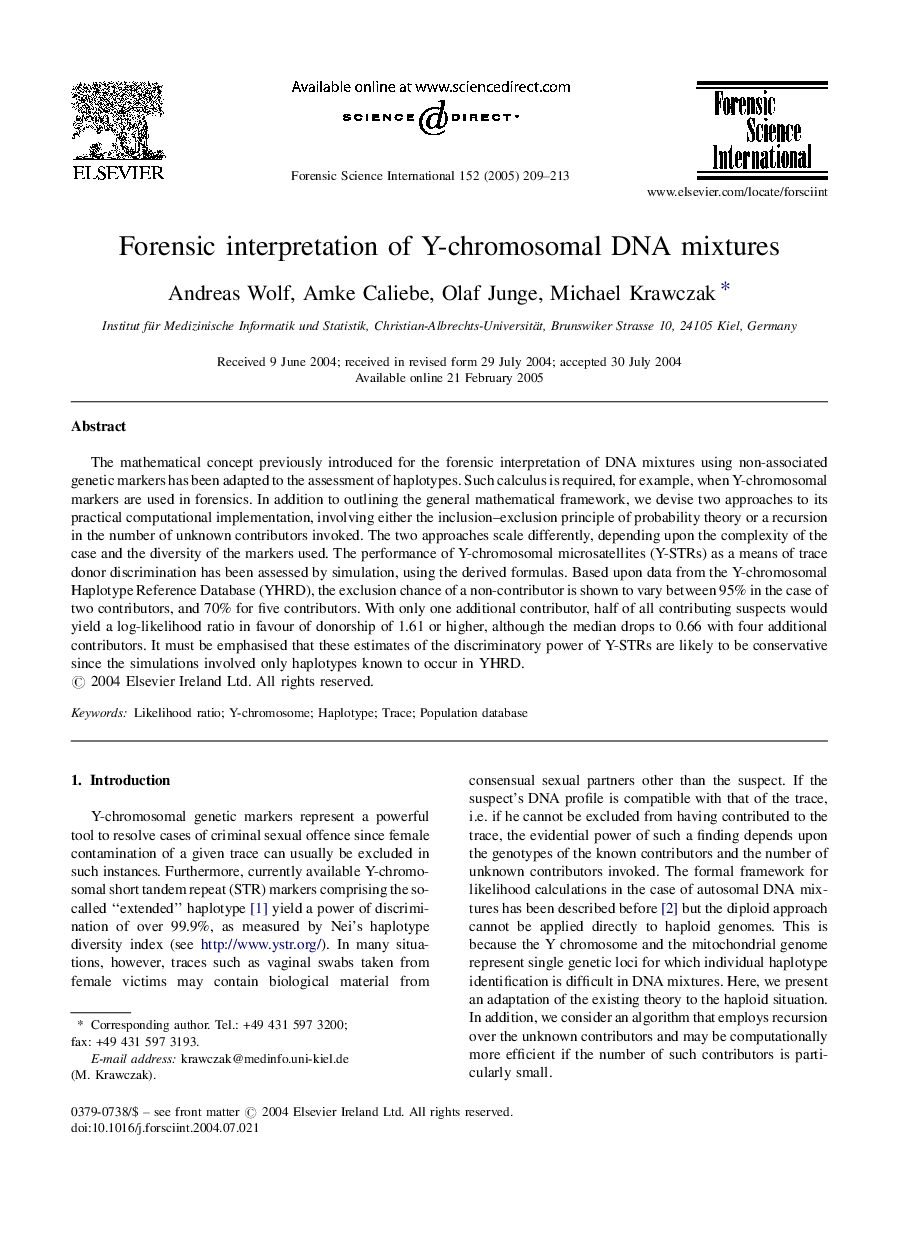| Article ID | Journal | Published Year | Pages | File Type |
|---|---|---|---|---|
| 9622494 | Forensic Science International | 2005 | 5 Pages |
Abstract
The mathematical concept previously introduced for the forensic interpretation of DNA mixtures using non-associated genetic markers has been adapted to the assessment of haplotypes. Such calculus is required, for example, when Y-chromosomal markers are used in forensics. In addition to outlining the general mathematical framework, we devise two approaches to its practical computational implementation, involving either the inclusion-exclusion principle of probability theory or a recursion in the number of unknown contributors invoked. The two approaches scale differently, depending upon the complexity of the case and the diversity of the markers used. The performance of Y-chromosomal microsatellites (Y-STRs) as a means of trace donor discrimination has been assessed by simulation, using the derived formulas. Based upon data from the Y-chromosomal Haplotype Reference Database (YHRD), the exclusion chance of a non-contributor is shown to vary between 95% in the case of two contributors, and 70% for five contributors. With only one additional contributor, half of all contributing suspects would yield a log-likelihood ratio in favour of donorship of 1.61 or higher, although the median drops to 0.66 with four additional contributors. It must be emphasised that these estimates of the discriminatory power of Y-STRs are likely to be conservative since the simulations involved only haplotypes known to occur in YHRD.
Related Topics
Physical Sciences and Engineering
Chemistry
Analytical Chemistry
Authors
Andreas Wolf, Amke Caliebe, Olaf Junge, Michael Krawczak,
